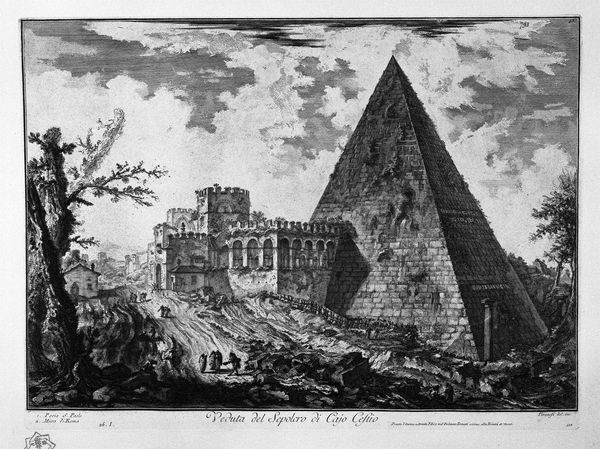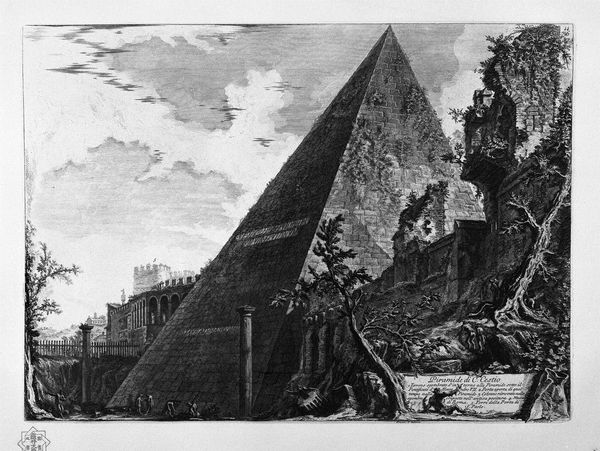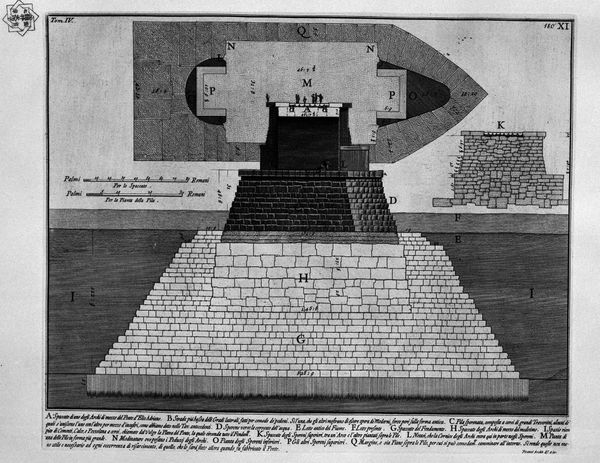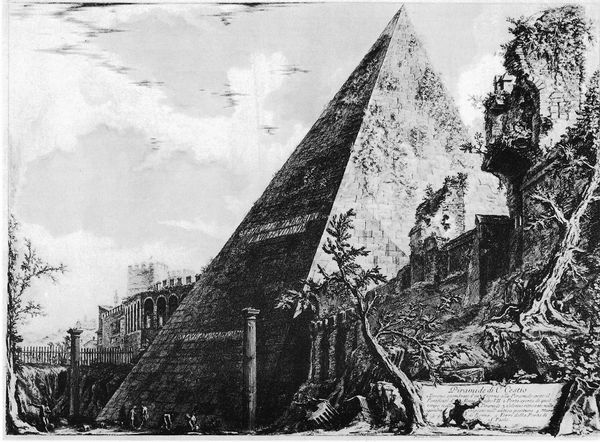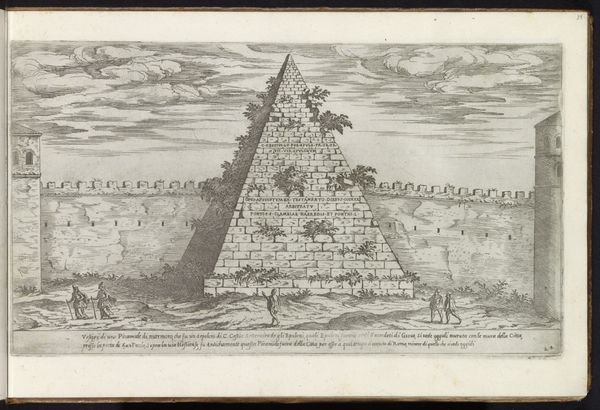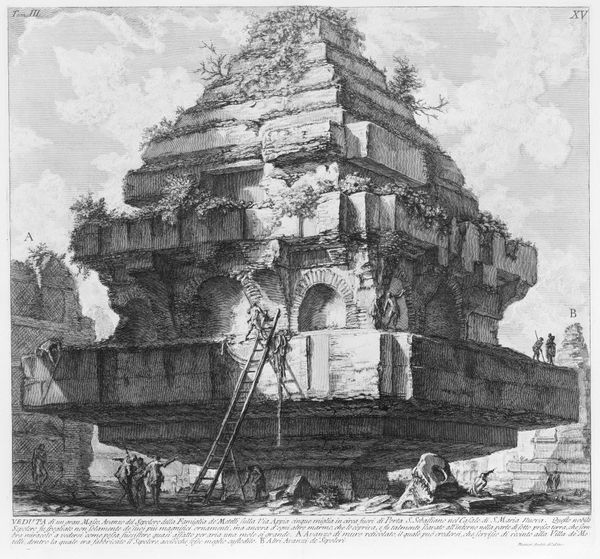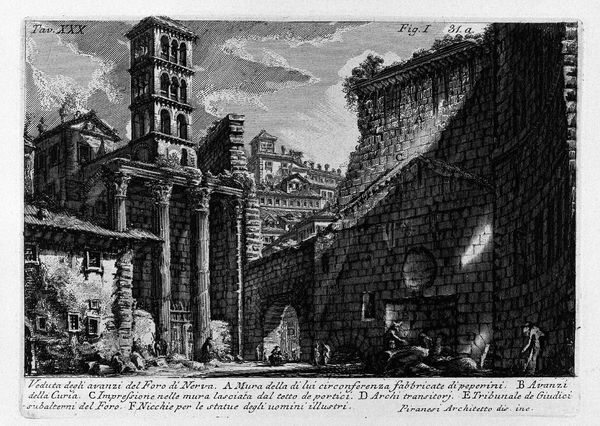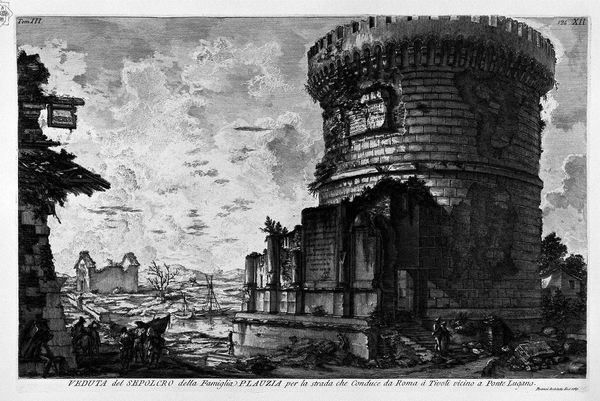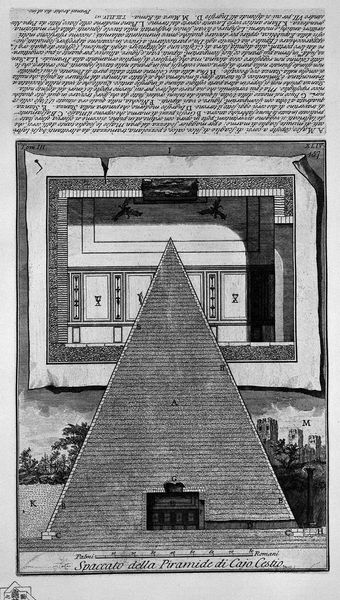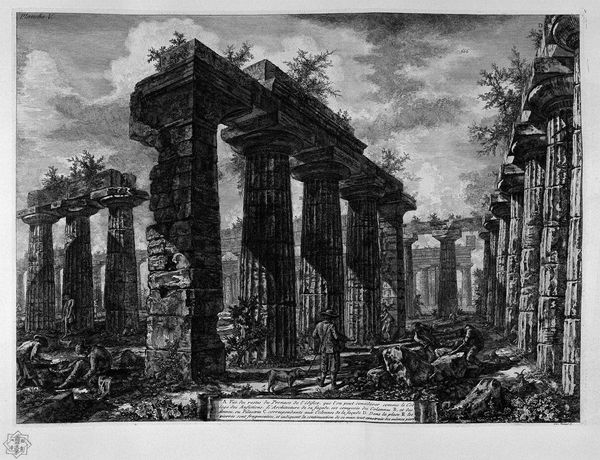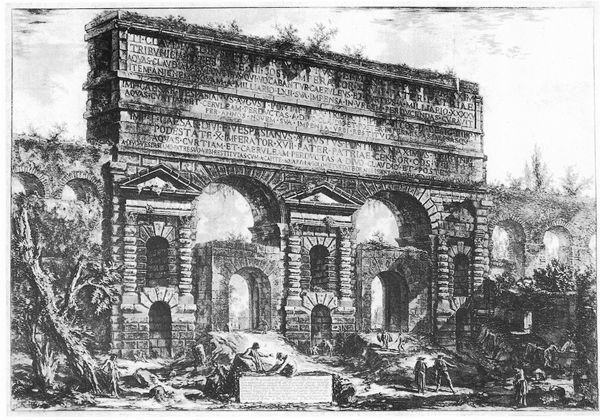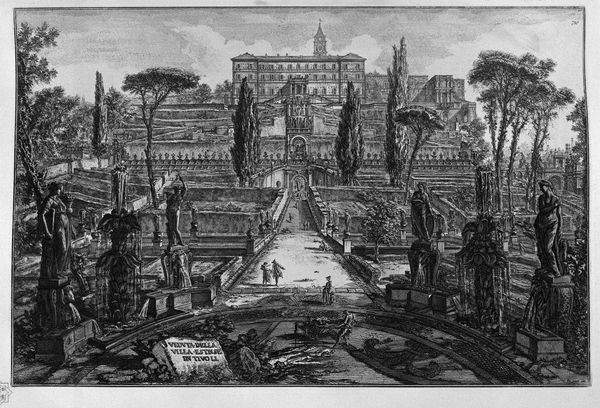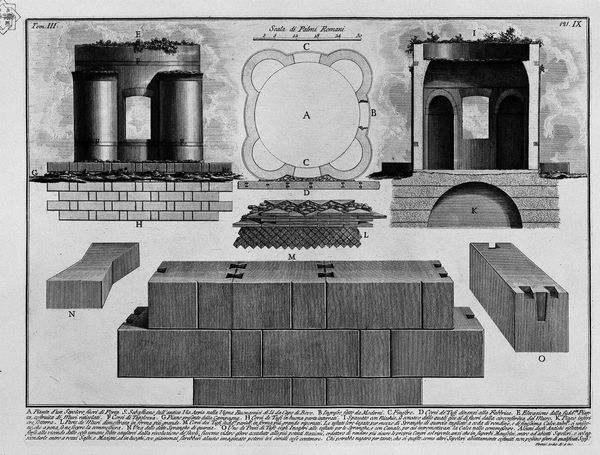
The Roman antiquities, t. 3, Plate XL. View of the Pyramid of Caius Cestius.
drawing, print, etching, photography, engraving, architecture
drawing
neoclacissism
etching
landscape
photography
ancient-mediterranean
engraving
architecture
Copyright: Public domain
Curator: This image by Giovanni Battista Piranesi captures a scene in ancient Rome. The print is titled "View of the Pyramid of Caius Cestius." I find it so striking – the dramatic light, the imposing architecture juxtaposed with these tiny figures… what do you make of it? Editor: I'm struck by the sheer weight of it all. That pyramid dominates the scene, almost suffocating everything around it. It feels…oppressive, monolithic, and enduring—but it’s also an echo of empires and histories, demanding to be read, urging consideration of what persists across millennia and what has become backgrounded. Curator: Absolutely, and it’s fascinating how Piranesi, who was very much swept up in the neoclassical movement, blends his background with the grandeur of the ancient world. There’s a theatrical quality here. Editor: It’s certainly staging something. It isn't merely an image of the pyramid. Consider the social and political subtexts embedded in ruins and the archaeological gaze itself. Who is doing the looking, and why? This view suggests a specific kind of power dynamic at play—one where ancient history is consumed, appropriated even. Curator: Hmmm… You think there is a darker tone, where Piranesi uses an admiration of antiquity to also emphasize the melancholy awareness of ruin, and how past societies often act like warnings for present times. Editor: Precisely! Notice the scale and composition choices – not only highlighting the pyramid itself, but juxtaposing it to the walls and city behind the pyramid; which themselves become "scenery". To what extent can one experience become an appropriation and sanitization of the real. Curator: What do you think visitors today can learn from the drawing, other than maybe a lesson of history. Editor: Today? To examine their position in our contemporary construction of "antiquity." Consider who continues to have access to history, and how narratives have been forged across decades and centuries—ultimately impacting and creating who we have now. The drawing becomes more than a historic document. It becomes an invitation to critically engage in our inherited power dynamics of art, archive, and gaze. Curator: This artwork is something quite marvelous in history. Editor: It has been a pleasure.
Comments
No comments
Be the first to comment and join the conversation on the ultimate creative platform.
